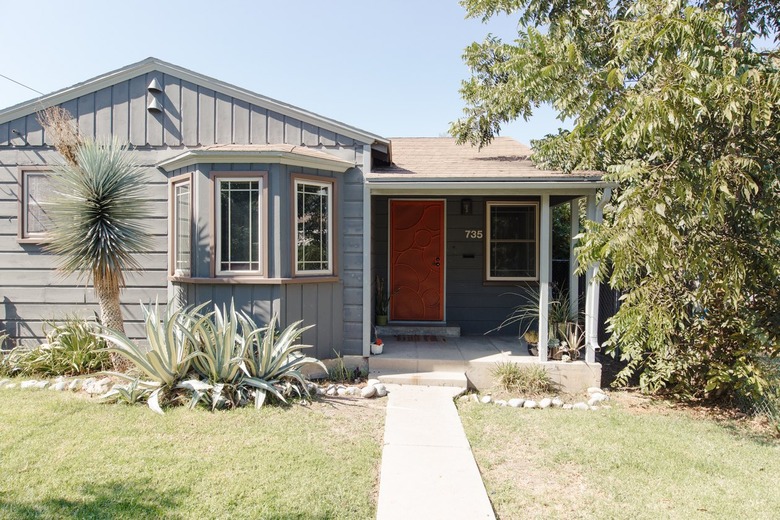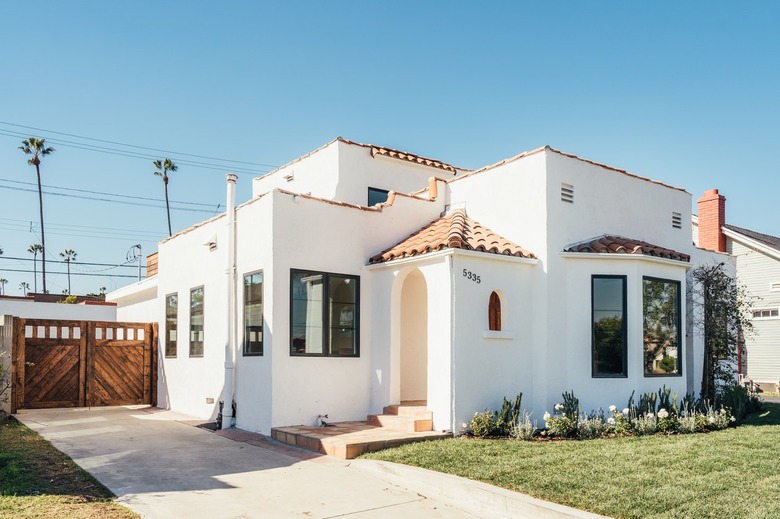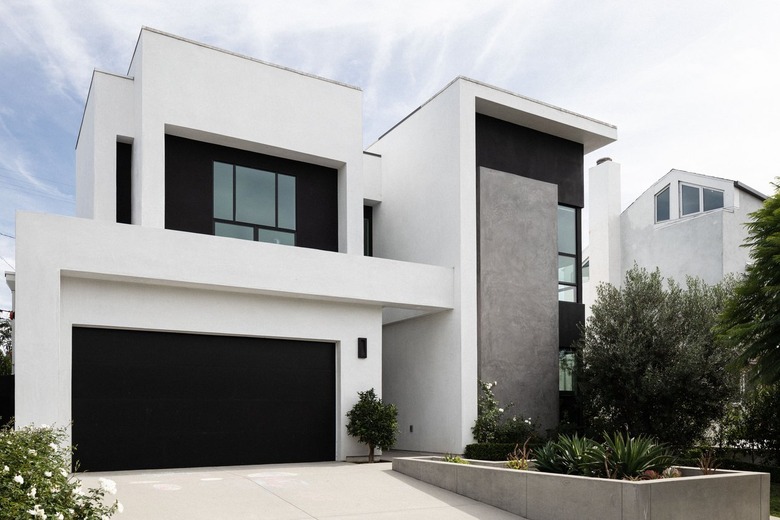How (And When) Do You Lock In A Mortgage Rate?
Homebuyers shopping for a mortgage find out just how quickly mortgage interest rates can rise and fall. You'll see rate fluctuations even during a single day let alone during the weeks it takes to process a mortgage. One way to avoid this rate roller coaster is by obtaining a mortgage lock-in rate, which can keep your home loan's interest rate from rising higher before closing. If you are a beginner in the homebuying process, you'll need to understand the hows, whys, and potential why nots when it comes to locking in a rate.
What Is a Mortgage?
What Is a Mortgage?
In the current real estate market, most homebuyers do not have the cash to buy a residence outright and need a home purchase loan to help finance their home. A real estate loan is also termed a mortgage.
With a mortgage, the homebuyer makes a down payment (ideally 20 percent of the property price to avoid paying private mortgage insurance), and the lender puts up the money needed to complete the purchase. The lender also takes back a lien interest in the real estate, with the property itself serving as collateral. The borrower agrees to make monthly payments, including a set amount of principal and interest on the loan. If they default, the lender can take back and sell the property.
There are a number of different types of mortgages available from lenders depending on the buyer's needs. The most common types of mortgage loans include:
- Fixed-rate mortgages, where the interest rate stays the same over the life of the loan
- Adjustable-rate
mortgages, where the interest rate stays the same for an initial term,
after which it can change periodically based on prevailing market rates
Understand Interest Rates
Understand Interest Rates
The interest rate on a mortgage is a very significant part of the ultimate cost of the property. Mortgage rates can vary widely depending on the type of loan, the qualifications of the borrower, and the current state of the market. They can change even during the homebuying process.
Homebuyers often get preapproved for a mortgage even before they begin shopping. This allows them to calculate how much they can afford to pay and also gives them an edge in a tight real estate market. But if the interest rate on the mortgage goes up even a little before the deal's closing date, their monthly payments and total payments can rise sharply.
What Is a Mortgage Lock-In Rate?
What Is a Mortgage Lock-In Rate?
A mortgage lock-in rate, also called a mortgage rate lock, is an agreement between a borrower and a lender. It locks in the prevailing market interest rate on a proposed mortgage for a certain amount of time.
When the interest rate is locked, it will not change between the moment the buyer got the rate lock and the time of closing. This will occur just as long as the home purchase closes within the specified time period, and there are no changes to the borrower's loan application.
Duration of Lock Period
Duration of Lock Period
The lock period gives the borrower protection against a spike in interest rates, but for how long? There is no uniform time period for lock-in rates to last. They typically run for 30, 45, or 60 days, but the duration can be longer.
Sometimes, the lock-in period can be extended if it is set to expire before the real estate purchase closes. But neither the mortgage lock-in rate nor any extension of it (if permitted) comes free.
Costs of a Lock-In Period
Costs of a Lock-In Period
Lenders may charge lock fees for the mortgage lock-in rate. Sometimes they do, and sometimes they don't, so it's important to ask. The answer will vary among lenders and sometimes loan products, and these fees can be either refundable or nonrefundable. Generally, short-term locks under 60 days are either free or cost about 0.25 to 0.50 percent of the loan, but longer rate locks come at a cost.
When lenders do charge, the rate lock fee can come in a variety of forms:
- A flat fee
- A percentage of the total loan amount
- Folded into a higher interest rate
Rate Rise After Rate Lock-In
Rate Rise After Rate Lock-In
Exactly what happens when interest rates change during the lock-in period? If they rise during the period, the borrower is not impacted. They have locked in the mortgage and the interest rate and will still pay only the lower rate that they were guaranteed. However, this will not be the case if:
- The borrower changes the loan product they want.
- The borrower changes the amount they wish to use as a down payment.
- The price appraisal on the home in question comes in different than expected.
- There is a significant adjustment to the borrower's credit score that makes them a less-desirable applicant, like taking out another loan or defaulting on some debt.
- The income amounts provided by the borrowers do not check out.
Generally, these types of changes are written as exceptions in the mortgage rate lock agreement.
Rate Drop After Rate Lock-In
Rate Drop After Rate Lock-In
Generally, buyers are protected if rates rise after the rate lock-in, but what if rates drop during the purchase process?
This is the downside situation to consider about mortgage lock-in rates. If rates drop below the rate the borrower has locked in, they are generally stuck with the rate they locked in and cannot take advantage of those lower rates. Rather, they will have to pay the higher rate.
However, some mortgage rate lock agreements include a section termed a "float-down provision." This allows the borrower to take advantage of lower interest rates if rates fall during the rate lock period.
Tip
Float-down options can be expensive — costing .5 – 1% of the loan — so a homebuyer will have to weigh the cost of including one against the chances that interest rates will fall.
When to Lock In an Interest Rate
When to Lock In an Interest Rate
The best timing on a mortgage lock-in rate is not always certain. If a borrower locks in the rate too early, the risk is that the period will expire before the house closes, and the lender will need time to process the loan. However, locking in too late may mean missing a good rate.
Many feel that the best time to lock in a mortgage rate is when a homebuyer first signs a purchase agreement on a specific house. That's the time to shop around for a mortgage loan with a good interest rate and lock in that rate. Before doing the lock-in, find out from the lender how long its average loan processing takes.
Another rule of thumb is to lock in the mortgage interest rate for as long as possible. With a longer rate lock period, the buyers are most likely to hold on to the rate in the agreement even if the loan processing is delayed. Look out for the cost, though, and also interest rate fluctuations. Some lenders offer a lower interest rate for shorter rate lock periods and a higher interest rate for rate locks with a longer duration.
As a homebuyer, it is easy to find all of the different steps in the process confusing and even overwhelming. But keep in mind that many people are first-time buyers and get through the process, and you will too. The key is to get a solid understanding of the different steps, including the mortgage lock-in rate, and proceed slowly.


